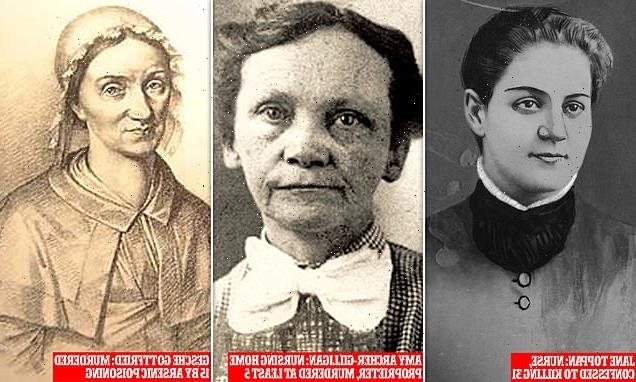
Female serial killers are often nurses or healthcare professionals who kill children or the elderly
- 39% of female serial killers are nurses or work in healthcare, research shows
- Author explores the motivations behind America’s most prolific serial killers
Nearly half of female serial killers are nurses or professionals working in healthcare, according to new research from author Dr Marissa A. Harrison.
Released Thursday, Dr Harrison’s latest book, ‘Just As Deadly: The Psychology of Female Serial Killers’ explores the motivations and circumstances of some of America’s most prolific female serial killers.
Through her research, she found 39% of female mass killers work in healthcare professions, are likely to be of at least average intelligence, to be well educated, and to be after their victims’ money.
But above all, women are more likely to pursue victims they see as vulnerable, including elderly people, the sick and children.
This draws many to jobs with a responsibility of care, such as health and nursing.
Dr Harrison is a research psychologist, author and associate professor at Penn State Harrisburg.
Serial killer Jane Toppan at the age of 24. Toppan was Cambridge Hospital nurse who used her patients for personal experiments with morphine and atrophine to see the effects of different dosages on the nervous systems.
In the book, Dr Harrison notes the overwhelming lack of research into female serial killers.
She says ‘fewer than one in six legitimate research papers and books on serial murder are about female serial killers’, which she suggests may be linked to the perception that women are more nurturing.
This, she warns, is a misperception – though male and female serial killers tend to behave differently and to come from different backgrounds, on average.
She told Neuroscience News: ‘For females, the most common is financial gain, whereas for men it’s often sexual gain.
‘The ways in which they kill also differ. Women’s primary means are poison, and men’s are asphyxiation.’
Overrepresented in the nursing and healthcare professions, female serial killers who find themselves with large quantities of medication, poisons and sedatives have been shown to carefully and deliberately end the lives of those in their care.
The author notes: ‘Women commit murder, and they get away with it.’
Amy Archer-Gilligan features in Dr Harrison’s book. She was a nursing home proprietor from Connecticut who poisoned and killed at least five people including her second husband and residents of her nursing home.
While male serial killers tend to have a high-school education or lower, female mass murders are more likely to be educated, delicate and subtle with their methods, Dr Harrison found.
‘Women commit murder, and they get away with it,’ the author wrote. They are ‘usually clinical with their murders and aim to make deaths look as natural as possible.’
In a clinical setting, they tend to target ‘people who are very young, very old, or helpless,’ she writes.
Nicknamed ‘the Angel of Bremen’, Gesche Gottfried helped the town through a cholera epidemic. 13 years later, authorities discovered she had been using arsenic to murder people, with crimes partially covered up by the epidemic.
Referring to 27 case studies and a pool of original data, as well as academic sources, the author is able to point to some commonalities between male and female serial killers, such as a history of abuse or trauma, until now largely underexplored.
With some mental illnesses common among serial killers regardless of gender, she hopes better awareness and treatment options will help would-be killers and prevent future deaths.
She notes that these tend to be from ‘WEIRD’ cultures – Western, Educated, Industrialized, Rich and Democratic – and leaves open the door for further research into the curious and horrifying psychology that drives people to kill.
The book was released 9 February 2023.
Source: Read Full Article


